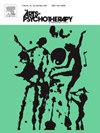开放工作室治疗方面的经验,青少年在精神科日间治疗单位:定性分析
IF 1.5
3区 心理学
Q3 PSYCHOLOGY, CLINICAL
引用次数: 0
摘要
本质性研究旨在探讨开放工作室艺术治疗在精神科日间治疗单位的青少年所经历的治疗方面。该研究基于建构主义理论、青年参与性行动研究原则和艺术知情研究,共有9名年龄在13-18岁之间的参与者。通过半结构化的深度访谈和参与者对其作品的反思来收集数据。三角方法确保了对参与者经历的有力调查。数据分析揭示了三个主要类别:(1)共享创意空间促进个体治疗过程;(2)创造性的自我表达,促进自我意识和自我发现;(3)艺术治疗师作为创作过程的养育者和守护者。与会者强调了支持性的创作氛围、归属感和社区意识的重要性,以及艺术治疗师在维持创作环境中的作用。这些发现突出了开放工作室内部的关系动态,并展示了青少年与共享创意空间之间的互动如何促进个人成长和心理治疗。该研究强调了以患者为中心和经验验证的治疗方法的重要性,并提供了能够更好地将艺术治疗实践与精神病学环境中青少年的发展和情感需求结合起来的见解。本文还提出了研究的局限性和进一步研究的建议。本文章由计算机程序翻译,如有差异,请以英文原文为准。
Open studio therapeutic aspects as experienced by adolescents in a psychiatric day treatment unit: A qualitative analysis
This qualitative study aimed to explore the therapeutic aspects of Open Studio art therapy as experienced by adolescents in a psychiatric day treatment unit. It was based on constructivist grounded theory, youth participatory action research principles, and arts-informed research, and involved nine participants aged 13–18. Data were collected through semi-structured in-depth interviews and participants’ reflections on their artworks. The triangulated approach ensured a robust investigation into the participants' experiences. Data analysis revealed three primary categories: (1) the shared creative space facilitating individual therapeutic processes; (2) creative self-expression promoting self-awareness and self-discovery; and (3) the art therapist as nurturer and guardian of the creative process. Participants emphasized the importance of a supportive creative atmosphere, a sense of belonging and community, and the art therapist’s role in maintaining the creative environment. These findings highlight the relational dynamics within the Open Studio and showcase how the interaction between adolescents and the shared creative space fosters personal growth and psychological healing. The study underscores the importance of patient-centered and experientially validated therapeutic approaches and offers insights that can better align art therapy practices with adolescents' developmental and emotional needs in psychiatric settings. Study limitations and recommendations for further research are also presented.
求助全文
通过发布文献求助,成功后即可免费获取论文全文。
去求助
来源期刊

Arts in Psychotherapy
Multiple-
CiteScore
3.20
自引率
11.10%
发文量
66
期刊介绍:
The Arts in Psychotherapy is a dynamic, contemporary journal publishing evidence-based research, expert opinion, theoretical positions, and case material on a wide range of topics intersecting the fields of mental health and creative arts therapies. It is an international peer-reviewed journal publishing 5 issues annually. Papers are welcomed from researchers and practitioners in the fields of art, dance/movement, drama, music, and poetry psychotherapy, as well as expressive and creative arts therapy, neuroscience, psychiatry, education, allied health, and psychology that aim to engage high level theoretical concepts with the rigor of professional practice. The journal welcomes contributions that present new and emergent knowledge about the role of the arts in healthcare, and engage a critical discourse relevant to an international readership that can inform the development of new services and the refinement of existing policies and practices. There is no restriction on research methods and review papers are welcome. From time to time the journal publishes special issues on topics warranting a distinctive focus relevant to the stated goals and scope of the publication.
 求助内容:
求助内容: 应助结果提醒方式:
应助结果提醒方式:


